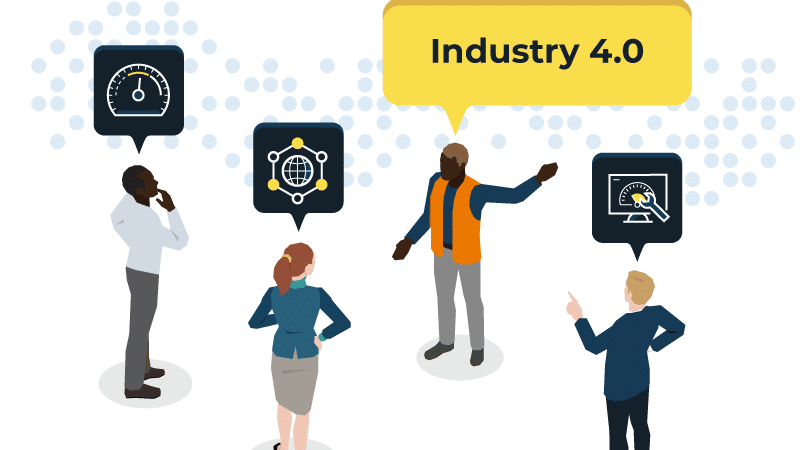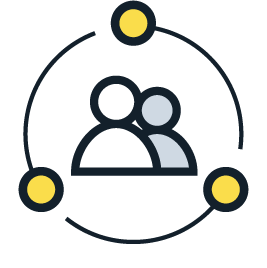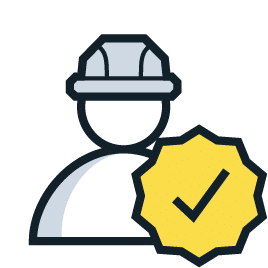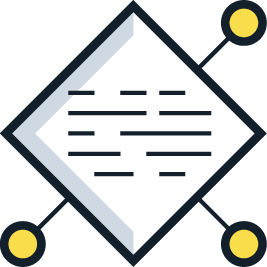Revolutionize your paper manufacturing with AI-driven optimization. Enhance efficiency, cut costs, and achieve autonomous operations like industry leaders Arjowiggins and Oji Paper. Embrace the future of smarter production!
Learn more

Change management during a digital transformation is a difficult, but not impossible, endeavor. Learn how to improve your change management efforts with this white paper.
Implementing new technology in your organization is already challenging to fund, purchase, and install. However, many manufacturers find it increasingly challenging to ensure new—and often expensive—technologies are being utilized. The repercussions of abandoned digital transformation efforts hurt not only at the corporate level but all over the organization.
Whether you are making organizational changes or implementing new technology in your organization, today’s manufacturing leaders need effective change management techniques for long-term success. Investing in an effective change management strategy allows manufacturers to future-proof their operations and improves the chances of overcoming any issues they may face.
Here are four tried-and-true change management techniques you can utilize to ease the transition to digital transformation.
For successful change management, executive leadership must establish clear goals and objectives, as well as communicate these effectively throughout the organization. Setting these goals should incorporate the contribution of multiple departments, not just executives.
Employees at every level should be involved when introducing new technology or protocols to the manufacturing process. Engineers, operators, and plant managers have valuable process knowledge that they can bring to the conversation. Bringing them into the conversation can illuminate insights into how a given change affects the workflow of their department or team. It also provides a platform for shop floor employees to share suggestions on how to alleviate any resistance or workflow disruption.
Additionally, these conversations build trust between leaders and shop employees, as employees feel heard and appreciated by top management. While these conversations can happen during a virtual “all hands” information session, executive leaders should make an effort to visit facilities to meet teams and departments in person. This extra effort to meet shop employees where they’re at can help ease tension and resistance to the changes made in the organization.
It is also imperative that leaders work to establish cross-departmental teams. Studies have shown that cross-departmental teams improve the quality of decision-making and goal alignment within organizations.
For example, IT and OT teams have historically found it difficult to converge their efforts. Historically, IT teams tend to solve problems from a global approach and OT teams take a localized approach to problem-solving. As a result, they often lack understanding of each other’s techniques. This misunderstanding could impede collaboration and restrict progress. To overcome any confusion, leaders must work with all sides to establish shared goals, strategies, and projects that facilitate successful collaboration between all teams and departments.

Let’s revisit how IT and OT teams could work together. If you are implementing new software, leaders could create a committee with members of both OT and IT teams. Establishing safety and security goals benefits both IT and OT teams, making it easier for them to find common ground and can motivate them to collaborate. Working together towards a common goal and sharing knowledge can bring forth innovative discoveries, improve security, and bridge the gap between individual departments and the entire organization.
Sappi, a world-renowned market leader in fiber resources, has prioritized knowledge sharing to build strong, collaborative teams across its global organization. For example, Sappi’s data science teams collaborated with domain experts to generate more ideas, increasing the chance of successful projects. When they were selecting the right IIoT vendor for their 4.0 projects, they put this collaborative approach into practice.
“Drawing on the efforts of our different teams enabled us to build a comprehensive POC [proof of concept] because we knew what we wanted,” said Joanne Boyd, Global Service Manager for Advanced Analytics at Sappi.
This cross-team collaboration trickled down into other internal projects, too, including model building. Although the data science teams were still involved in multiple aspects, the domain experts brought their unique process knowledge during the development of key models. Working together, the two teams generated more ideas and minimized the number of steps from idea to model to execution.
Once your organization has established the right teams and set aligned goals, the next step is identifying the right KPIs to achieve your goals. Organizations that have not yet undergone digital transformation may still rely on spreadsheets or paper reports, which are likely out-of-date or unreliable. Access to accurate, real-time information is key to uncovering process improvement opportunities at every stage of the manufacturing process.
Up-to-date information allows all teams and departments to track initiatives, goals, or KPIs. McKinsey & Co. found that organizations using KPIs as part of their long-term change management strategies were seven times more likely to see success compared to those who didn’t.
It’s important to define these KPIs clearly, including how you will measure them and how often. This transparency ensures that all teams and departments understand how well implementation is going and where employees may struggle to adapt to new procedures.

Tools like Braincube’s Studio App make it easy to track KPIs for teams, facilities, or even globally. Studio is a one-of-a-kind tool that can integrate real-time and historical data usage in a single workspace. It allows users to simultaneously compare live conditions to historical data, ensuring that production runs smoothly and as planned. This makes it easier to monitor how real-time conditions compare to historical performance or current goals
Studio’s intuitive low-code/no-code customization empowers every team to create a dashboard that fits their specific goals or objectives. This means that different users can build custom, personalized dashboards that address their specific KPIs or objectives. Teams can also build and share workspaces in just a few clicks, providing greater visibility into projects that span multiple teams.
Studio also gives top leaders direct access to data from multiple facilities at one time. This allows top-level management to identify and track KPIs at each facility, with the ability to get as broad or granular as they want. In other words, they can take in a granular view of the plant-specific KPIs funneling up into the progress on larger company goals, like sustainability.
A global elastomer company‘s leadership team faced challenges implementing its 4.0 initiatives across all regions and facilities. Each digital transformation effort was disparate, diverse, and isolated. The company found it impossible to make significant headway because different facilities were taking on different use cases using different tools.
To address this, the executive leadership team devised an overarching purpose and direction for the company’s digital transformation journey. They also invested in a formal program to improve Braincube usability across the organization, as the tool was already proven successful at a few facilities. Braincube played a crucial role in ensuring each facility possessed the necessary skills to make Industry 4.0 a success at all levels.
Motivating teams to implement changes and achieve goals can be difficult. A recent survey from Gallup shows 70% of employees in the U.S. feel disengaged at work. If employees are not motivated or encouraged to complete the company’s goals, it can take longer to achieve them—if they achieve them at all.
Many executive leaders use incentives to motivate teams or individuals to take on new challenges. However, the success of using incentives for change management depends on how they are implemented. Individual incentives or pitting teams against each other to win “prizes” can hurt your efforts. This could cause an unhealthy competitive culture that may foster resentment. On the other hand, sharing small wins throughout the company can encourage teams by fostering a sense of collaboration and encouragement.
Many manufacturers use gamification elements to raise the bar and motivate their teams. Gamification refers to applying game theory and design elements to non-game scenarios. Gamification can motivate and encourage employees while simultaneously providing valuable data and insights for continuous improvement and increased performance.
Although it may seem unconventional, gamification is becoming more prevalent in workplaces, including manufacturing plants. A Gartner study revealed that over 70% of global organizations have at least one “gamified” application.
For example, one of Braincube’s food and beverage customers recently installed a new slicer on both production lines, but teams were still not hitting their quality goals. Executive leadership collaborated with plant management to implement a gamification tool.

The company installed two screens in the middle of the shop floor displaying the production target for each team to achieve. Each shows a custom Braincube Studio workspace displaying real-time production numbers. Providing clear visibility into current production data fosters healthy competition between both production line teams, enticing them to reach new performance levels.
At the end of each day, plant managers and shift operators export and share dashboards across the organization that acknowledges the line with the best performance. Using gamification and daily team acknowledgment, leadership was able to motivate shop floor teams to find new ways to reduce downtime and improve efficiency, quality, and throughput within two months.
There is never the perfect time for an organization to implement changes, but how you implement them can make all the difference. Leaders should plan proactively and communicate goals clearly with all employees. Gamification techniques can motivate and inspire teams to go above and beyond their basic work demands.
With the right change management techniques, organizations can successfully bring in new tools, improve technology adoption rates, and obtain positive ROI for their 4.0 investments.

IT/OT convergence is important for digital transformation success. Here are ways to encourage collaboration between these two teams.

Sappi, a world-renowned market leader in paper and packaging manufacturing, wanted to fast-track its Industry 4.0 strategy.

Braincube’s Studio App’s low-code/no-code interface combines data from all systems to create custom, interactive data analysis, and visualization dashboards.